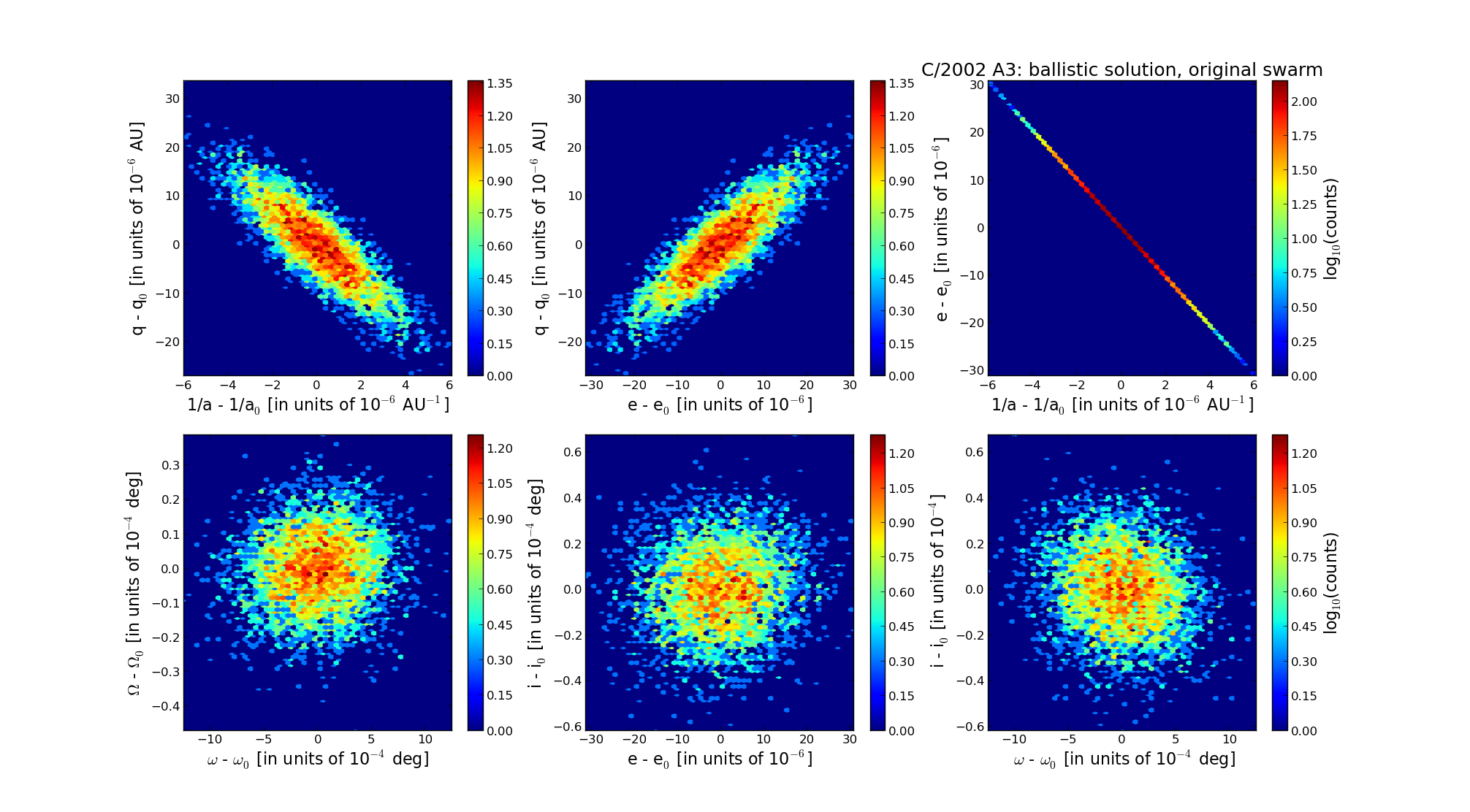| Solar System Dynamics & Planetology Group |
 |
C/2002 A3 LINEAR |  |
| Solar System Dynamics & Planetology Group |
 |
C/2002 A3 LINEAR |  |
| number of observations | 291 |
| number of residuals | 573 |
| data interval | 2002 Jan. 13 — 2003 June 24 |
| rms [arcsec] | 0.49 |
| orbit quality class | 1a |
| Epoch (TT) | 20020506.0 | = JD 2452400.5 |
| time of perihelion passage (TT) | 20020424.397426 | ± 0.003120 |
| perihelion distance | 5.15143918 | ± 0.00000756 |
| eccentricity | 1.00791266 | ± 0.00000927 |
| argument of perihelion [deg] | 329.479955 | ± 0.000348 |
| longitude of the ascending node [deg] | 136.550845 | ± 0.000010 |
| inclination [deg] | 48.039047 | ± 0.000017 |
| inverse semimajor axis [10-6 au-1] | -1536.01 | ± 1.79 |

| Epoch (TT) | 16960906 | |
| time of perihelion passage (TT) | 20020425.196888 | ± 0.003135 |
| perihelion distance | 5.14305257 | ± 0.00000772 |
| eccentricity | 0.99989342 | ± 0.00000939 |
| argument of perihelion [deg] | 329.552549 | ± 0.000350 |
| longitude of the ascending node [deg] | 136.668883 | ± 0.000010 |
| inclination [deg] | 48.065967 | ± 0.000017 |
| inverse semimajor axis [10-6 au-1] | 20.72 | ± 1.83 |
| Epoch (TT) | 24491208 | |
| time of perihelion passage (TT) | 20020419.461060 | ± 0.003121 |
| perihelion distance | 5.14743062 | ± 0.00000811 |
| eccentricity | 0.96822207 | ± 0.00000991 |
| argument of perihelion [deg] | 329.358358 | ± 0.000346 |
| longitude of the ascending node [deg] | 136.410260 | ± 0.000010 |
| inclination [deg] | 48.563937 | ± 0.000018 |
| inverse semimajor axis [10-6 au-1] | 6173.55 | ± 1.93 |